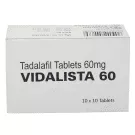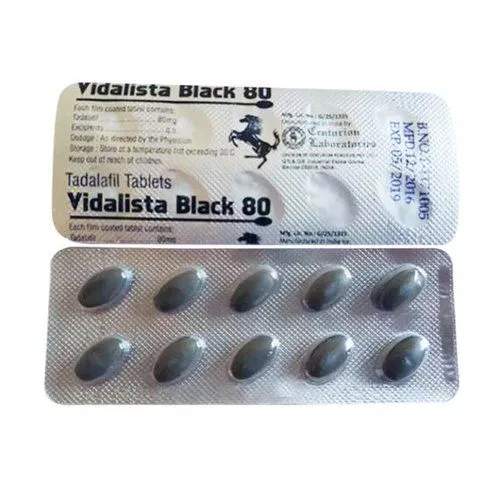Tadarise is a frequently prescribed medication for Erectile Dysfunction.
The inability to achieve or maintain an erection during sexual activity is known as Erectile Dysfunction (ED).
It has changed the lives of many patients because of its effectiveness and simplicity of use.
However, understanding Tadarise interactions, including those with food items is crucial for ensuring its best advantages and safety.
This in-depth guide covers Tadarise and food interactions to minimize side effects and get the most out of Tadarise.
Understanding Tadarise and Food Interactions
Tadarise is a generic form of Tadalafil that helps treat Erectile Dysfunction (ED).
But one should be aware of possible food interactions because they can affect the medication’s efficacy and safety.
Understanding how various food items may interact with Tadarise, impacting its effectiveness and safety, is crucial for patients starting this treatment.
The section below summarizes the food interactions of Tadarise and how they could affect the medicine’s efficacy.
Save up to 90% on your medicine bills

Orgie 20 Mg Oral Strips

Vidalista 60 Mg

Tadalafil Black 80 Mg

Cenforce 200 Mg
Foods to Avoid While Taking Tadarise
 Source: HandmadePictures from Getty Images Pro
Source: HandmadePictures from Getty Images ProWhen Tadarise is introduced into the body, it undergoes various metabolic processes, including liver metabolism, which can be influenced by specific food items.
When taking Tadarise, avoiding certain foods, such as grapefruit juice and high-fat meals, is essential.
Grapefruit Juice: Tadarise is metabolized by an enzyme that can be inhibited by grapefruit juice, resulting in increased levels of the medication in the body.
This interaction could harm the patient’s safety and lead to side effects.
While taking Tadarise, patients should avoid consuming grapefruit juice.
High-Fat Meals: High-fat meals can delay Tadarise’s absorption, which could delay its effect.
Patients should avoid consuming excessively fatty meals for optimal results and effectiveness of Tadarise.
Alcohol and Tadarise: While using Tadarise, alcohol consumption should be kept to a minimum.
Alcohol may reduce the medication’s effectiveness and drop blood pressure even further.
The chance of some Tadarise adverse effects may also increase with excessive alcohol use.
To know more about how alcohol interacts with Tadarise, read Can I take Tadarise with Alcohol
Tadarise’s action can be enhanced by specific foods, which can improve the effectiveness of treatment.
The effectiveness of the medication may be increased by including foods high in Nitrates and antioxidants in the diet:
Nitrate-Rich Foods: For a man to get and keep an erection, Nitric Oxide is essential.
Eating foods high in Nitrates, like leafy greens, beets, and pomegranates, can be helpful.
These foods generate Nitric Oxide, which works together with Tadarise.
Antioxidant-Rich Foods: Erectile Dysfunction can be worsened by oxidative stress.
Berries, citrus fruits, and nuts are foods high in Antioxidants that can help lower oxidative damage and improve general vascular health.
Safety Precautions
 Source: nortonrsx from Getty Images
Source: nortonrsx from Getty ImagesTo protect patients’ health and improve treatment success, safety measures regarding Tadarise and food interactions are crucial.
Doctors should inform patients about the potential dangers of specific food interactions and provide instructions for safe use when prescribing or taking Tadarise.
Timing of Administration: Patients should take Tadarise at least 30 minutes before their intended sexual activity.
The medication’s absorption and onset of action increased when taken on an empty stomach, increasing its effectiveness.
Patient Medical History Assessment: Perform a thorough evaluation of the patient’s medical history, noting any underlying illnesses and concurrent medications.
Tadarise may interact with other medicines or medical conditions, changing its safety profile.
Individual Tolerance and Dose Adjustment: Ensure patients understand the recommended dosage and strictly adhere to the doctor’s instructions.
Depending on the response and tolerability of each person, the dosage may need to be adjusted.
Avoiding Nitrates and Alpha-Blockers: Stress the necessity of preventing using Tadarise simultaneously as Nitrates (such as Nitroglycerin) or Alpha-blockers (such as Doxazosin) used to treat Hypertension.
Combining these medications may significantly lower blood pressure, which could result in a medical emergency.
Monitoring for Adverse Effects: Encourage patients to watch out for any negative side effects while taking Tadarise and contact their doctor immediately if any worrisome symptoms emerge.
Frequent adverse effects include back discomfort, indigestion, flushing, and headache.
Caution in Certain Populations: Use caution when giving Tadarise to patients with significant liver or kidney disease or older people.
Dosage modifications may be necessary to prevent possible issues.
Conclusion
If you’re having trouble with Erectile Dysfunction, Tadarise can be a helpful medicine.
However, it’s crucial to consider how it interacts with food to ensure the best and safest treatment.
To make informed decisions about Tadarise and food interactions, knowing which foods to avoid and which ones may improve its effects is essential.
Also, taking safety measures and reporting any side effects promptly can help ensurea successful and secure treatment process with Tadarise.

Frequently Asked Questions
Why is understanding food interactions with Tadarise important?
Food can influence how Tadarise is absorbed and metabolized in the body, affecting its effectiveness and safety. Knowing about food interactions can help patients optimize their treatment outcomes and minimize potential risks.
What types of food should be avoided while taking Tadarise?
Certain foods can interfere with Tadarise’s effectiveness or lead to unwanted side effects. Patients should avoid consuming grapefruit or grapefruit juice, high-fat meals, and alcohol, as they may impact the medication’s working.
Are there any foods that can enhance the effectiveness of Tadarise?
Yes, certain foods can complement Tadarise’s action and contribute to better treatment outcomes. Nitrate-rich foods like leafy greens, beets, pomegranates, and antioxidant-rich foods like berries and nuts can potentially enhance Tadarise’s effects.
How long should one wait after eating before taking Tadarise?
It is generally advised to take Tadarise on an empty stomach or after a light meal. High-fat meals can delay the drug’s onset of action, so patients should wait at least 2 hours after a heavy, fatty meal before taking Tadarise.
What are the common side effects of Tadarise?
Common side effects of Tadarise may include headache, flushing, indigestion, or back pain. These side effects are usually mild and temporary,and subside once your body adjusts to the medicine.
Cheap Medicine Shop only refers to credible, authoritative sources for our content. If you’re curious about how we ensure the integrity of our content, we encourage you to read our Content Information Policy.














